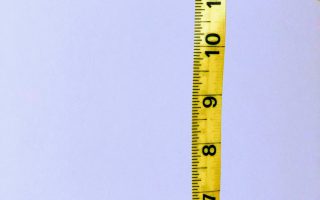Disclosure: This post may include affiliate links through the Amazon affiliate program or other affiliate partnerships. If you click on a link and buy something, I may receive a commission, at no additional cost to you. You can read more boring disclosure details in my disclosure and privacy policy.
These tips will help you address your plugged milk duct naturally, before it leads to the development of mastitis.
Unfortunately, I, like many breastfeeding mothers, have suffered from plugged milk ducts from time to time. This is especially common for me during the postpartum period, or the first six weeks after birth.
My daughter and I got off to a rough start with breastfeeding, and I developed several plugged ducts and full-blown mastitis once. With the recent birth of my son, I’ve already had a plugged duct a whopping six times in the first 5 weeks.
Update 1/11/22: I have now had my third baby, and while I have not suffered from plugged ducts as much as my second, these are still my tried and true tips to nip it in the bud!
These plugged ducts are despite following all of the recommended ways to avoid mastitis; in my case, I simply struggle with a bit of an oversupply. My body is producing more milk than my baby wants to eat, leading to a blocked duct.
When I have a clogged duct, I immediately follow all of the tips I’m outlining in the post. This is to avoid mastitis, which feels like having the flu, but with extreme boob pain and a newborn baby to take care of. I also want to avoid the antibiotics that are often prescribed to treat mastitis unless absolutely necessary.
Read on to learn about the difference between a plugged milk duct and mastitis, and how to treat your blocked duct naturally.
For other resources on mastitis and breastfeeding, check out www.kellymom.com or www.lalecheleague.com.
Symptoms of a plugged milk duct
When breastfeeding, look out for one or more of the following symptoms:
- Tender/sore breast
- Hard lump/swollen area of the breast
- Redness or warmth at the affected area
- Reduced milk flow
- Pain during nursing, especially during letdown
- More pain before nursing, and less pain after
- Low-grade fever (less than 101.3) – this is rarer, but possible
If you have any of these symptoms, it’s important to start addressing the issue right away. Mastitis can come on very quickly and is much more painful.
Mastitis presents with the same symptoms as a plugged milk duct, as well as:
- More intense pain in the breast, can be radiating outward towards the arm
- May be red streaks in the breast around the plugged duct
- Fever of 101.3 or greater
- Chills, aching, and fatigue similar to the flu
- Milk may have strings or lumps, or contain pus, mucus, or blood; this is totally safe for the baby
If there is any thought in your mind that you may have mastitis, call your OB/GYN. While not all mastitis needs to be treated with antibiotics, serious mastitis that goes untreated could lead to an abscess in the breast that may require surgery.
Regardless of whether you have a general plugged duct or mastitis, the following tips can help you feel better as soon as possible. Keep in mind that it may take 24 hours for a clogged duct to work it’s way out, so be persistent with all of these methods for best results.
Tips to treat your plugged milk duct naturally
Use the baby
Nurse, nurse, nurse! If you have a plugged milk duct, nurse as often as possible to help work the clog out. If you are exclusively pumping, simply try to pump more than usual, about every 2 hours.
Although it will be painful, resist the temptation to pump rather than nursing the baby directly. The baby is always more effective than the pump at removing milk from the breast, even if you are using a nipple shield.
Throughout the nursing session, massage the painful milk duct and use breast compressions. This, in combination with your baby’s suction, will increase milk flow and help draw out the backed-up milk.
People used to recommend that mothers try to position the baby’s jaw on the affected area, believing that the motion of the jaw would massage the clogged duct. This was based on the belief that the milk duct starts at the back of the breast and follows a straight path to the nipple. We now know this is untrue, and that the milk ducts are a crazy network that wander all over the breast. While it’s a good idea to change up your nursing position, nothing specific is necessary.
Alternatively, if your husband is up for it, use him to suck out the clog. He’s even better than a pump or a baby. Don’t worry, you never have to tell a soul. But this is totally a thing people do – Dax Shephard helped Kristen Bell with her mastitis.
Feed on the affected side first
Your baby’s suction is strongest when they are the hungriest, or at the beginning of the feeding. Begin every feeding on the side that is in pain, and keep that side as empty as possible. However, don’t completely ignore the other boob; use the pump if you need to empty the other side.
If nursing during the letdown is too painful, you can use the baby on the other breast at first, and then switch to the side with the plugged milk duct after the letdown.
Use gravity
Gravity is on your side when it comes to clearing a milk duct.
If you’re exclusively pumping, be sure to bend over while pumping.
If you’re nursing, and have some upper body strength, you can try “dangle feeding”. Basically, this is when you prop yourself up with your arms so that your chest is directly above your baby’s mouth. If that is too physically exhausting, or it’s difficult to latch your baby on this way, you can simply lean over while nursing or have your baby lay flat on your lap.
Take a warm shower
Personally, with each plugged milk duct I’ve had, this method has been most effective (besides nursing the baby).
While taking a shower, run warm water over the area of your breast that’s most painful. Massage the breast and do breast compressions to help loosen the clog. A breast compression is when you hand express milk by starting at the back of the breast and squeezing down and towards the nipple.
A soapy comb can be used to help massage the breast during the shower. I’ve had great success with this method.
Warm and cool compresses
Before each feeding, use a hot compress on the clogged part of the boob for about 20 min. This will help loosen the clog, ideally so that it will disappear by the end of the nursing session. Rather than a washcloth or towel for the compress, use a clean baby diaper; it will stay warm much longer.
After feeding, a cool compress can be used for pain relief. Many women also report that applying cabbage leaves they’ve stored in the fridge help a lot with pain and engorgement.
Try a lactation massager
I bought this lactation massager with my third baby, and it is worth every penny. There’s a reason why it has such rave reviews on Amazon. I’ve found that it takes the pain away within one to two minutes of starting a feeding. As a bonus, it is completely waterproof, so you can use it in the shower. This tool is specifically designed for clogged ducts and mastitis! It can also be used to increase milk output during pumping, so it’s useful at any point of your breastfeeding journal.
Soak your nipple
Epsom salt is widely known for it’s healing properties. If you’re suffering from mastitis or a plugged duct due to a cracked nipple, try soaking the nipple in an Epsom salt solution. This can be done easily by using a Haaka to hold the solution. Just don’t leave it on for longer than 10-15 minutes, as it may cause the skin on the nipple to begin peeling.
This solution is great to keep in mind if you have any kind of nipple trauma, such as a teething injury.
Sunflower lecithin
This is another method I have not personally tried, but that I have seen recommended by several mothers who are trying to avoid antibiotics. Breastfeeding women can safely take between 3600-4800mg of Lecithin each day until the plugged ducts disappear. Its recommended that this is taken in 1200 mg doses 3-4 times each day. Talk to your OB about continuing to take Lecithin if you suffer from frequently plugged ducts.
Lecithin is found naturally in a variety of foods, such as soybeans or brussel sprouts. Sunflower lecithin is thought to be made with less chemicals, is cold-pressed, and contains other helpful vitamins.
Get some rest!
Although it’s difficult with a newborn, try as hard as you can to rest, especially if you have a fever and preferably with the baby in bed with you for easy nursing access. If you have anyone who has offered to help you around the house, now is the time to take them up on that offer. Call in the reinforcements – a friend, your mom, anyone.
Finally, hydrate well, and avoid excess sugar in your diet.
Get a great bra…
I would be remiss if I signed off on this post without telling you about my favorite breastfeeding product ever… The Kindred Bravely French Terry nursing bra. It is incredibly soft, and is seriously the most comfortable thing I’ve ever owned. This soft bra will help prevent the development of future plugged milk ducts because it is breathable and lacks any structural underwire.
If you’re on the fence, don’t be – I actually ordered three bras in the wrong size, and Kindred Bravely replaced them all free of charge so that I had something that fit correctly. I got to keep my stained, worn, bras that will hopefully fit again one day.
Click here for 20% off your first order on anything on the site!
You may also want to read my post on preventing plugged milk ducts.
Best of luck to you, mama, in getting healthy again! Xoxo, Amy




